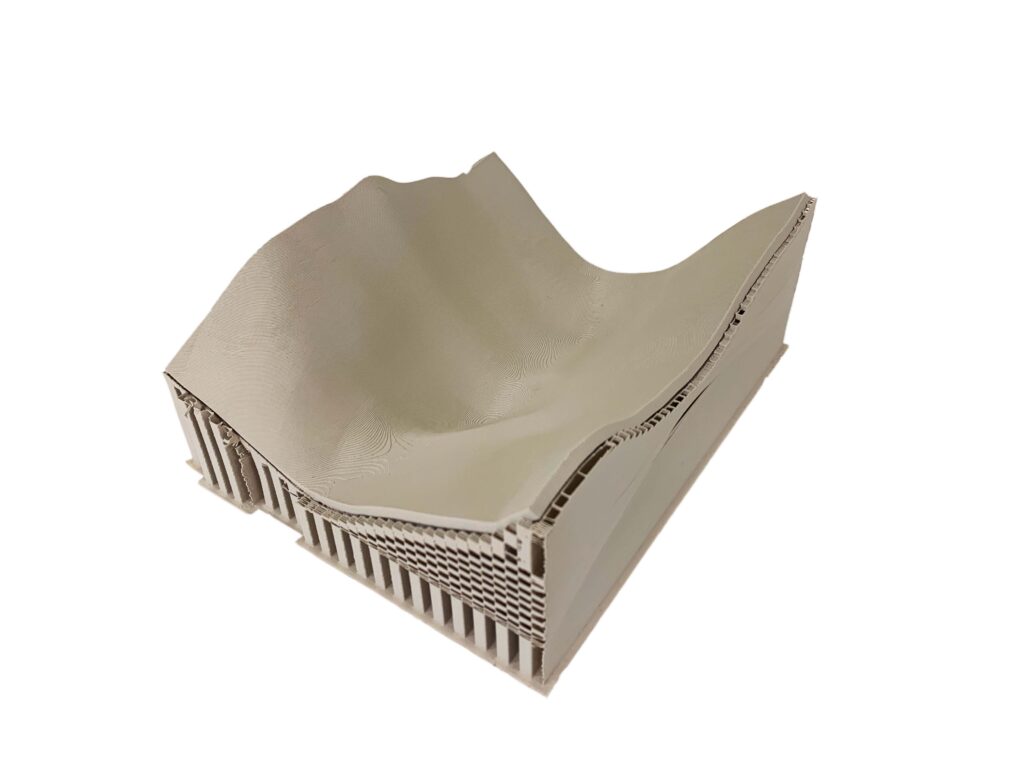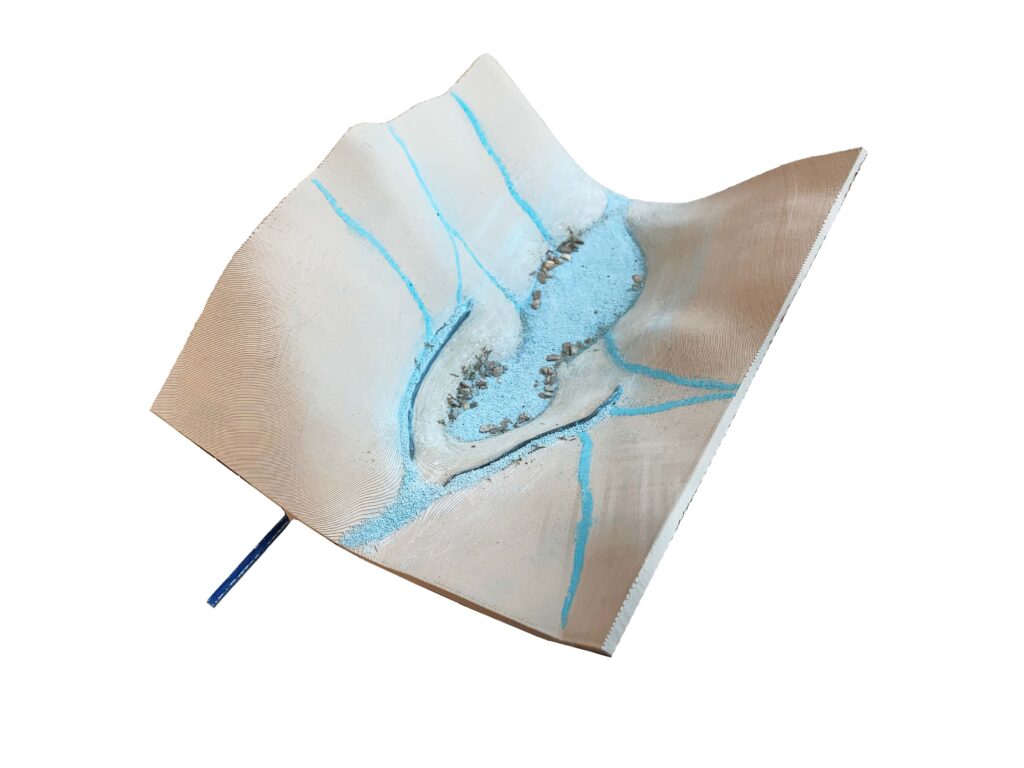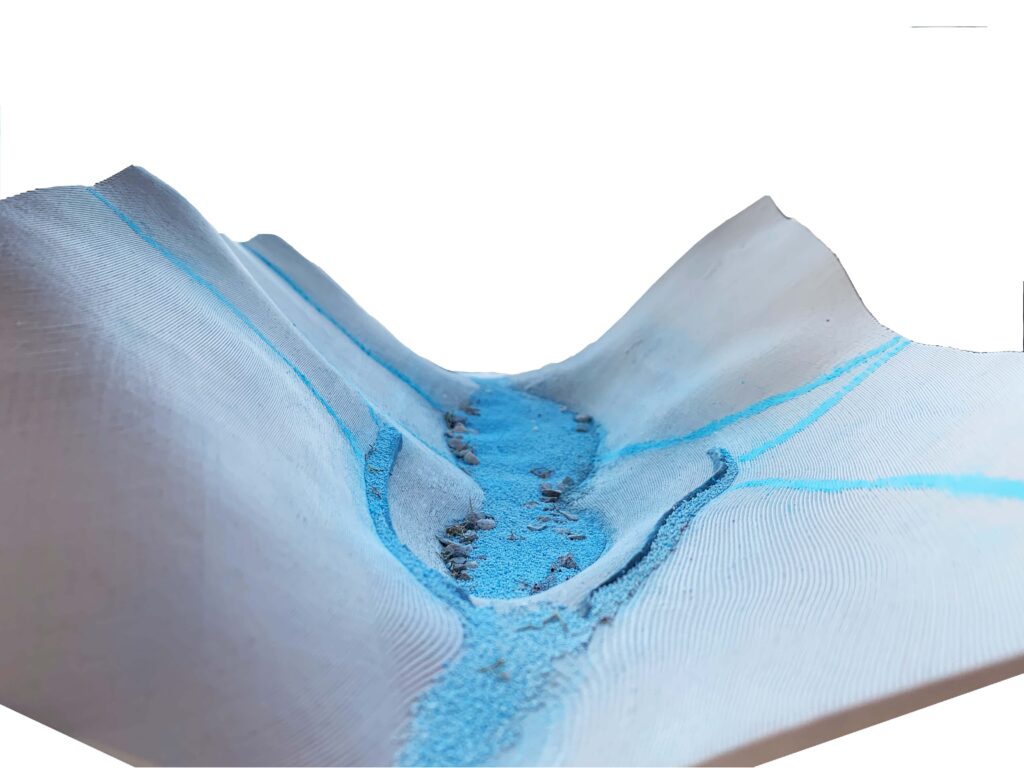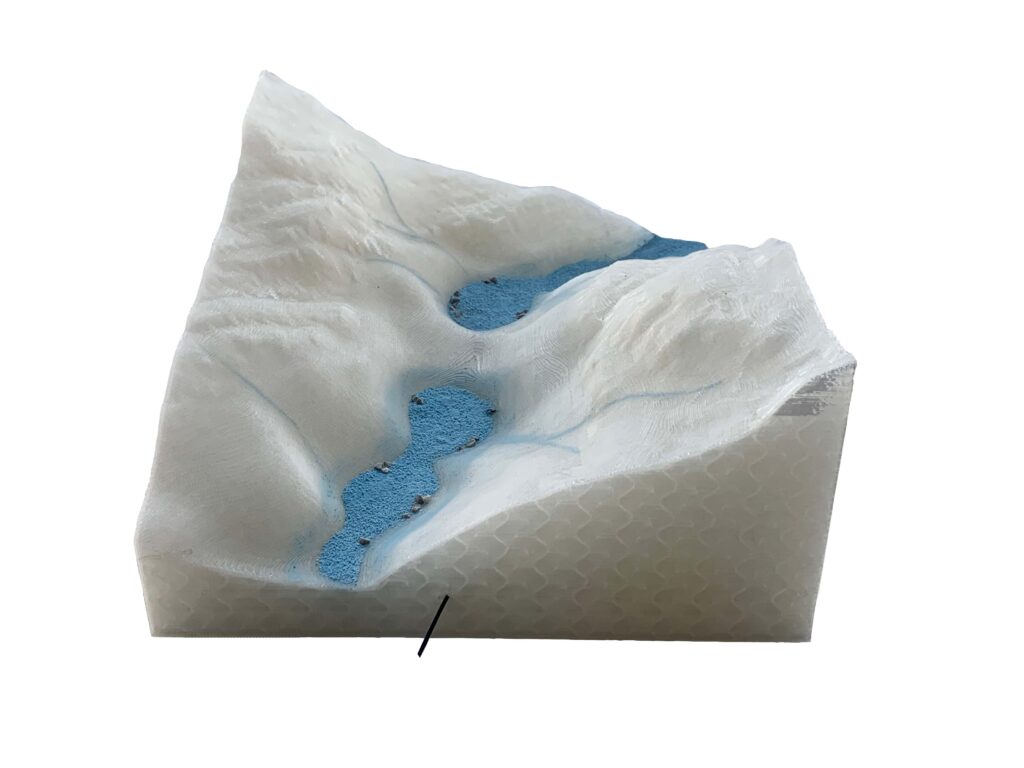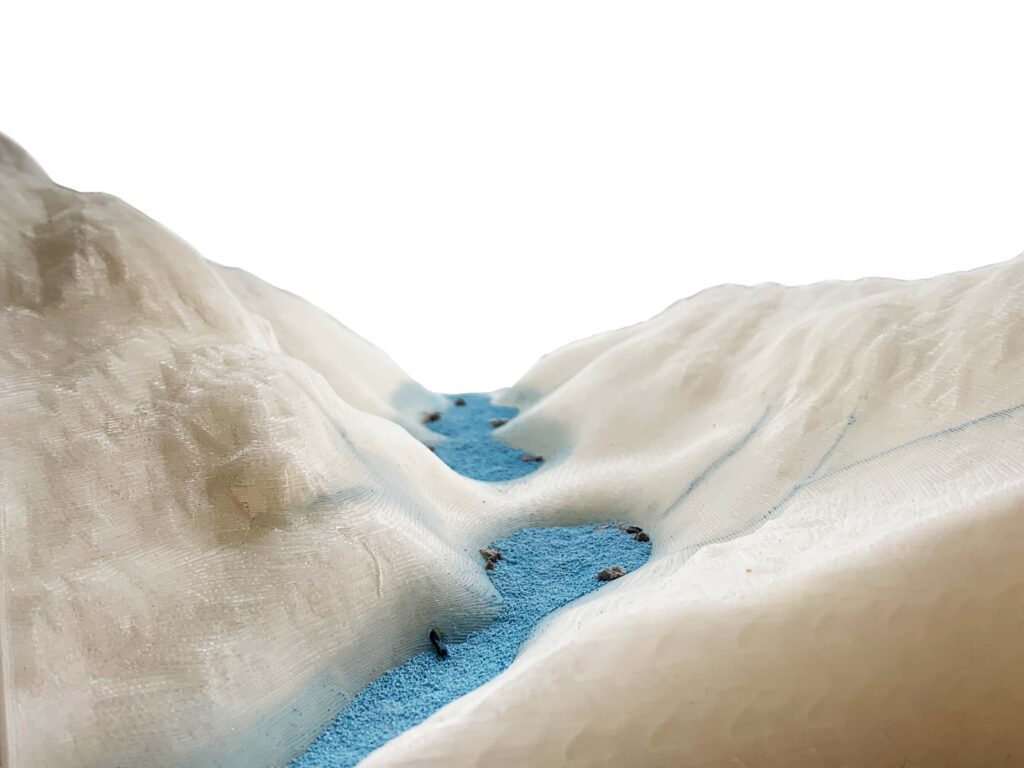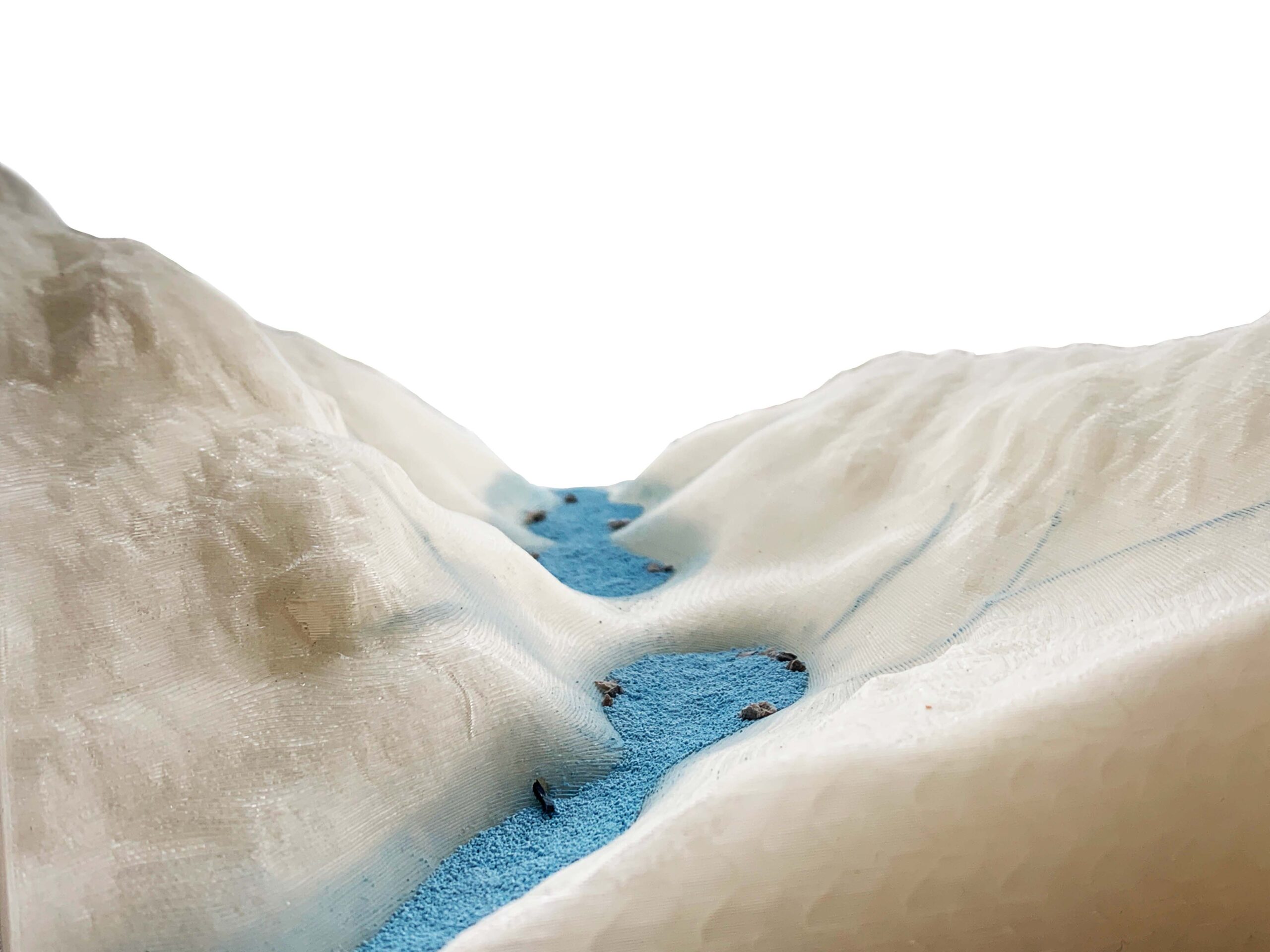Semesterarbeit – Xue Jingfan
Studio Günther Vogt & Thomas Kissling
The glaciers in Alps are very important seasonal store of water. Certain amount of precipitation is stored as ice in winter, which then melts in summer. The melting water from glacier is crucial to the summer runoff of related catchment area. For instance, 40% summer runoff of Rhône is the melting water from glacier. However, as the glacier is retreating every year, we are also losing this natural water store. This will cause serious drought in summer in related catchment area.
This project, located in the Aletsch Glacier, reacts to the future challenge. As the glacier retreats, new lakes will appear in the glacier forefield. These new lakes are projected as water store, which store water for irrigation and water supply in summer. By making a water tunnel at the lake bottom, the lake water can be drawn out, and the water level can as well be controlled.
During the design process, I would like to try out different interventions, and test their influence on the water flow. The topography of the glacier without ice is a very important basis. So I first generate a digital 3D model based on the datasets, and then make it physical with the help of the 3D printer. The surface is smoothly printed, and the small variations in the topography are well captured. Later I tried to add the water layer to the printed model. Powder paints are used to imitate the water volume. By combining handcraft with the machine made basis, I got an intuitive understanding of the formation of such new lakes, as well the water flow regime.
Then for the final presentation, I print another model with transparent material. It’s not transparent enough, however, to see the underground interventions. In this model, the topography of the mountains nearby is also included. The different textures of the surfaces, the sharp edges on the sides and the smooth bottom, are clearly represented in the model.
For me, this is a nice experience, or to say an interesting collaboration with the 3D printer. The 3D printed model is more precise and convenient than a hand model, and also more intuitive than a digital model. What’s more, it’s not just something cold and rigid produced by the machine, it’s really something you can work with and express your own idea.
